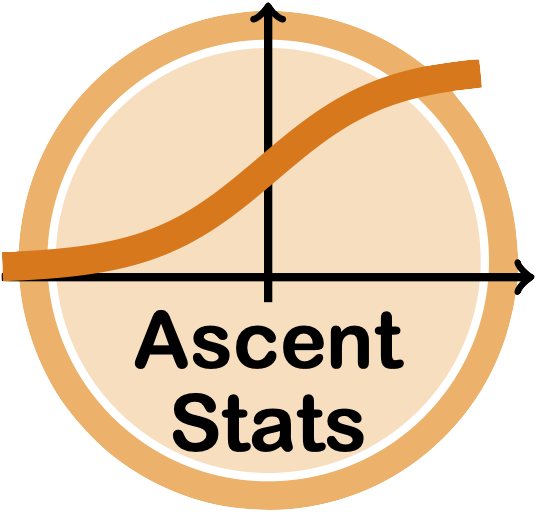FlashGrade
The plot displays a logistic curve of climbing difficulty based on a climber's grade (for this purpose a climber's grade is defined as the grade they would flash 50% of the time).
Explanation
Rock climbers attempt routes with varying difficulty levels, or "grades." You can also give a grade to a climber, representing their skill level, while a route's grade indicates its difficulty. A climber's grade can be defined as the grade at which the climber has a 50% chance of flashing the route. Thus, the higher a climber's grade, the more likely they are to conquer a given route, and the higher a route's grade, the harder it is to send.
The interactive plot allows you to see how hard different climbs are likely to be for you, given your "flash grade" (as defined above). Your grade is shown by the central vertical line. The difficulty curve can also be viewed in terms of "log-odds" of failure, representing the number of expected failures per success, which grows exponentially as the route's grade increases.
The model
The Bradley-Terry model treats climbing as a game between a climber and route, with each game's outcome depending on the relative grade of the climber and the route. The climber wins the game by sending the route, whereas the route wins the game when the climber fails to send the route (on that attempt or session). Logistic regression is used to predict the outcome of a game by comparing the climber's grade and the route's grade, transforming the difference into a probability of success.
This model demonstrates why climbers hit a wall in their climbing grades unless they improve their skills and why most climbers have a bandwidth of only about 7-8 grades between an easy warm-up and a multi-session project, regardless of their skill level.
Using this Bradley-Terry model, and a large database of public ascent data from thecrag.com we were able to estimate that the slope of the common climbing grade scales are quite consistent, at about 0.75, translating to an increase in expected number of failures by a factor of slightly greater than 2 for each increment of grade, regardless of the climber's ability.
See our paper for more details.
 AscentStats
AscentStats